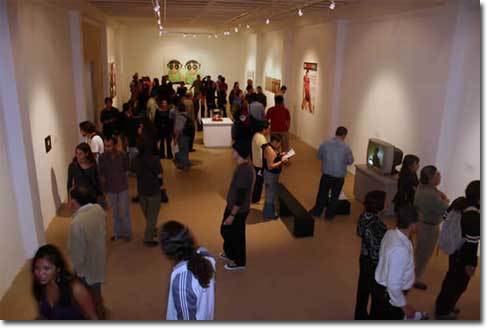Museo de Arte y Diseño Contemporáneo ,
Sep 06, 2006 - Oct 20, 2006
Antigua Fanal, San Jose, Costa Rica
Neither fickle chance nor precise laws
by Tamara Díaz Bringas
I modify this verse from Borges in order to use it in a repeated debate surrounding events of open convocation like the Costa Rican Biennial of Visual Arts, and of its selection and award processes. The arguments are well known: that any attempt at evaluation and interpretation sets in motion such a number of variables that any other jury would have returned different results; that the existence of a jury supposes subjective and partial criteria; that if it is an international event it lacks sufficient knowledge of the local context; that the works in those competitions are somewhat on the fringe of their processes of production and circulation. All right. Nevertheless, a biennial is not a lottery. With whatever excuse, whether for modesty’s sake of the chosen or to commiserate with those not so fortunate, we hear the same commentary a thousand times: "it’s a lottery". The trouble with that argument is that a game of chance requires no competence, no knowledge; neither technical expertise nor conceptual research. And, in a relatively small and paternalistic environment like Costa Rica, the idea of chance diminishes sense to a confrontational space such as that offered by the Biennial. If a convocational event could be close to gambling, which also supposes the acceptance of certain rules and a fair measure of risk-taking on the part of the participant, perhaps it would be better to think of the Biennial of Visual Arts in terms of a game of skill, involving a systematic training and, above all, a certain apprenticeship. There are no precise laws yet there are informed and responsible criteria in the selection of the jury that, in this edition, comprised Eva Grinstein, Pablo Helguera and Silvia Karman. Not by chance, the first point of their instructions specified: "That the jury maintain a search criteria of high standards of production and conceptualization, with the intention of focusing on formal rigor, the will to experiment with themes and media, coherence between the presented work and its theoretical justification, as well as to the thoughtful and critical search that should transcend the most conventional forms of production." Certainly, if anything distinguishes this fifth Costa Rican Biennial of Visual Arts from former editions it is a higher standard in the production and conceptualization of the works. This was also noticeable in a much more unequal and inconsistent exhibition. What follows, then, is an overview of some of the characteristics and features of the current Biennial: of its structure and organization, of the works and artists it comprises, of its exposure, of the expectations that were met and those that were not. The titles of the following epigraphs are taken from some of the exhibited works. Unnatural Limits. The Nature of Limits. Closer to the model of national salons than to that of international mega-events, the Costa Rican biennials have progressed from the limits of painting toward a gateway to new languages. From its 2001 third edition on, Bienarte has become a visual arts event, amplifying its capacity as a convocational event at the same time as its pertinence and legitimacy. This capacity of the biennial to transform itself into the measure demanded by artistic practices is, without doubt, one of the event’s most appreciated qualities. However, the will for change must be continually updated and the organizers of Bienarte must continue restating the conditions of this important forum of national art: its requirements for participation, its formats and its awards.
|













